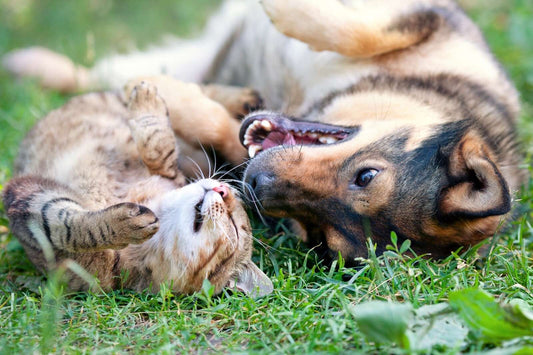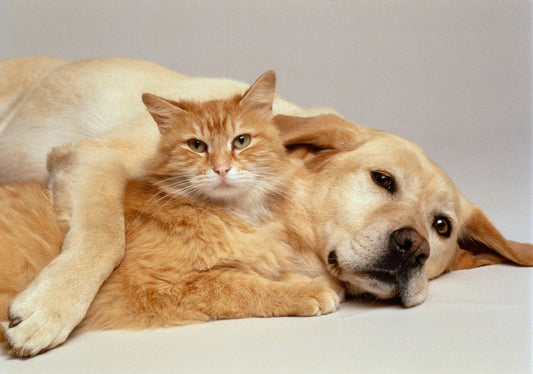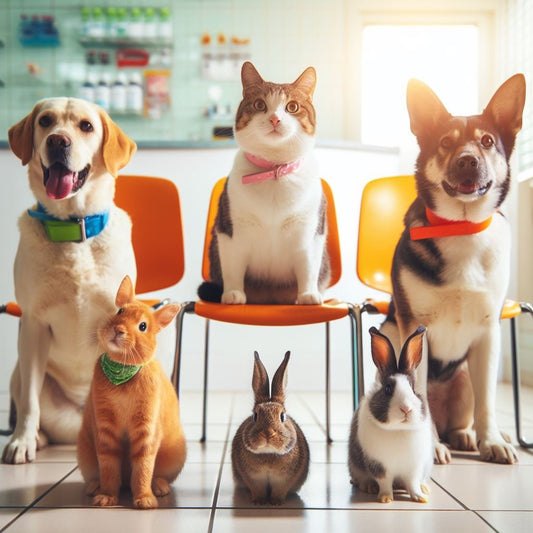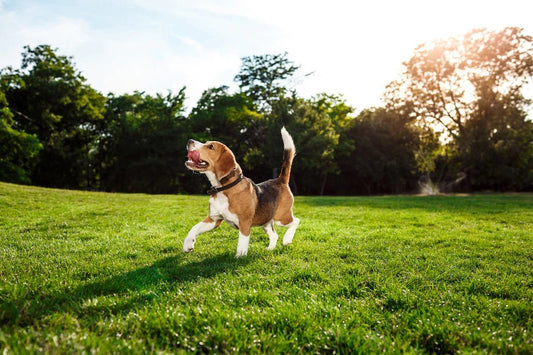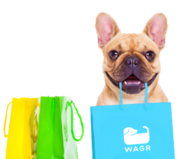Welcoming a new puppy into your home is an exciting adventure! For your pupster, one of the first skills to introduce is leash training. Teaching your puppy to walk politely on a leash not only ensures their safety but also prepares them early for enjoyable outdoor adventures together. Here, we'll explore the essential steps to get your puppy comfortable with wearing a collar or a harness, how to walk on a leash, and how to tackle any leash training problems.
When to Start Leash Training

You can begin leash training as soon as your puppy has had all their vaccinations, usually around 10-12 weeks old. Puppies under 3 months may be too young for structured training so don't rush into it.
Signs your pup is ready for leash training include:
-
They can walk steadily next to you off-leash without veering or needing frequent redirection. This shows they have good natural focus on you.
-
They are used to wearing a properly fitted collar or harness comfortably. Get them prepped by having them wear those for short periods.
-
They have some basic obedience skills mastered like coming when called, basic cues, and paying attention to you. A foundation of training helps with leash manners.
- Their adult teeth have come in completely. Pups going through teething may bite and chew more on the leash.
Start when your pup is mature enough to handle short sessions. Beginning too early can set the wrong precedent. Look for the signs of readiness above!
Equipment Needed
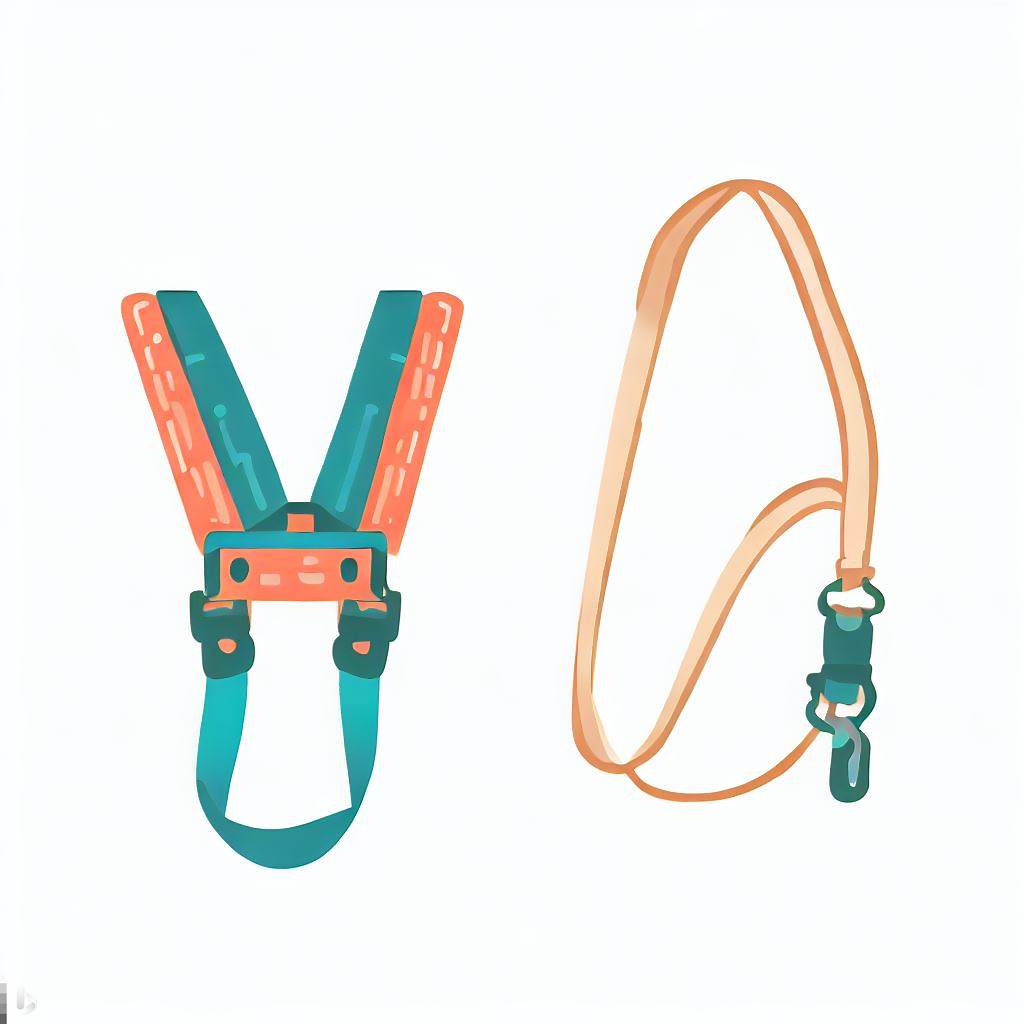
Having the right gear will set your pup up for leash training success:
-
Choose a properly fitted, comfortable collar or harness that doesn't jingle or slide around. Check for signs of rubbing. Go with a front-clip option to deter pulling.
-
For leashes, opt for 4-6 feet length. Retractable leashes don't teach good habits. Stick to nylon or leather leads that are durable but lightweight.
-
Bring along yummy, enticing treats like tiny pieces of chicken, cheese, hot dogs, etc. You'll rely on treats heavily for positive reinforcement training.
-
Consider a treat pouch that attaches to your belt for easy access to rewards. Keeping treats loose in your pocket can get messy!
Take time to find well-sized, high-quality gear that's customized to your pup. Proper fit and comfort prevent injuries or escape.
Initial Sessions
Before you and your pup get started on your walks, here are a few tips to consider.
1. Getting Your Puppy Comfortable with a Collar or Harness:
-
Start Early: Ideally, begin this process as soon as you can see the signs that your puppy is ready. The earlier they get used to wearing a collar or harness, the more comfortable they'll be with it.
-
Choose the Right Gear: Select a lightweight, well-fitting collar or harness. Make sure it's snug enough that your puppy can't slip out of it but not so tight that it's uncomfortable. Ensure there's room for two fingers to fit between the collar/harness and your puppy's neck or chest.
-
Positive Associations: Make the collar or harness a source of positivity. Show it to your puppy, let them sniff it, and reward them with treats and praise when they show interest or wear it willingly. Keep initial sessions short and sweet to prevent any discomfort.
- Gradual Introduction: Begin by placing the collar or harness on your puppy for a brief period during playtime or mealtime. As they become more at ease, increase the duration gradually.
2. Letting Them Drag the Leash Around Indoors:
-
Indoor Exploration: Once your puppy is comfortable with the collar or harness, attach a lightweight leash and let them drag it around indoors. This helps them get used to the sensation of something trailing behind them.
-
Supervision is Key: Always supervise your puppy during these indoor sessions to ensure their safety. Avoid situations where the leash could get tangled or pose any risks.
- Positive Reinforcement: Encourage your puppy to move around with the leash by using toys or treats. Reward them when they walk without resistance or hesitation.
3. Proper Leash Attaching/Detaching:
-
Practice Patience: Before going outside, practice attaching and detaching the leash indoors. Use treats and praise to reward your puppy for staying calm during this process.
-
Gentle Guidance: When attaching the leash, make sure it's not twisted or tangled. Secure it to the collar or harness without any abrupt movements that might startle your puppy.
- Safety First: Prior to outdoor walks, ensure that the leash is securely fastened to both the collar or harness and your own hand. Double-check that everything is in order to prevent accidental escapes.
The First Walks
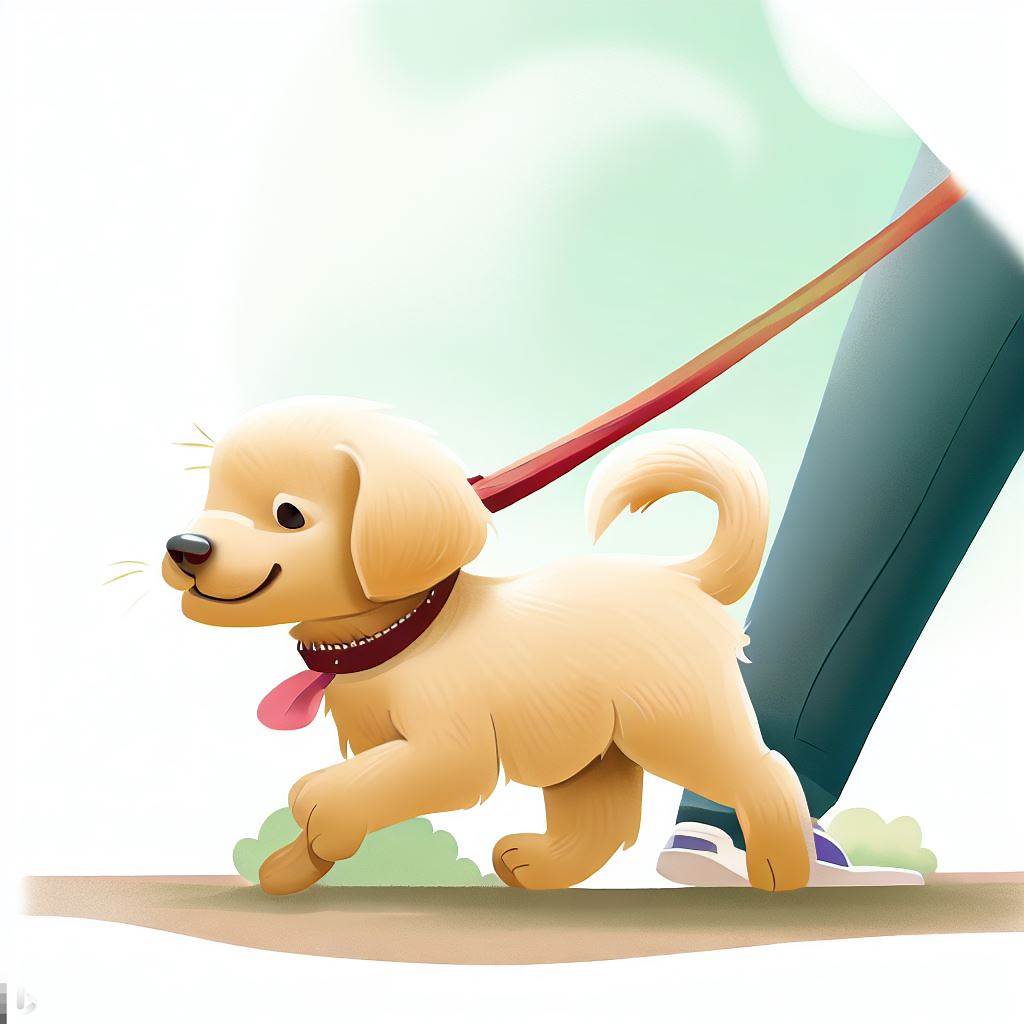
For a positive experience for both you and your furry friend, it's important to follow a few guidelines during these first few outings.
1. Keep First Walks Very Short:
-
Patience is Key: Your puppy is entering a new environment filled with fresh sights, sounds, and smells. Everything is intriguing, and it's easy for them to become overwhelmed. Keep the initial walks extremely brief, around 10 to 15 minutes, to prevent sensory overload.
-
Frequent Short Walks: Instead of one long walk, opt for several short, spaced-out walks throughout the day. This approach helps your puppy gradually get used to the great outdoors.
- Focus on Exploration: These early walks are less about exercise and more about exploration. Allow your puppy to sniff around, investigate their surroundings, and get comfortable with the feeling of the leash.
2. Bring High-Value Treats:
-
Positive Reinforcement: The power of positive reinforcement cannot be overstated. Arm yourself with high-value treats that your puppy adores. These can be small, soft, and easily chewable. Treats should be reserved exclusively for walks to make them extra special.
-
Reward Good Behavior: Encourage your puppy to exhibit good leash manners. Whenever they walk calmly beside you or respond to your cues, promptly reward them with a treat and plenty of praise. This reinforces the idea that walking nicely on a leash leads to delightful rewards.
- Lure and Reward: Use treats to lure your puppy into the desired position (usually walking beside you without pulling) and reward them for staying there. Consistency is key, so be sure to reward consistently when they behave as desired.
3. Reinforce Good Leash Manners:
-
Consistent Expectations: From the very first walk, set clear expectations for good leash manners. Encourage your puppy to walk beside you rather than pulling ahead. If they pull, stop walking until they return to your side.
-
Use Verbal Cues: Incorporate simple verbal cues like "heel" or "walk" to help your puppy understand your expectations. Pair these cues with treats and praise when your puppy complies.
- Be Patient: Leash training is a learning process, and puppies are bound to make mistakes. Stay patient and avoid any harsh corrections. Instead, redirect them gently to the desired behaviour.
Training Techniques
These proven techniques will help your pup shape good leash skills.
1. Practice Loose Leash Walking:
-
What is Loose Leash Walking: Loose leash walking means your puppy walks beside you without pulling or tugging on the leash. It's a skill that may take some time to master but is well worth the effort.
-
Start Indoors: Begin training indoors or in your yard where there are fewer distractions. Attach the leash and allow your puppy to get used to the sensation of it dragging behind them.
-
Short and Sweet: During the initial training stages, keep the leash loose and walks short. Encourage your puppy to walk beside you and reward them generously for doing so.
- Use Turns: When your puppy starts to pull, simply stop walking. When they return to your side, continue your walk. This teaches them that pulling gets them nowhere, but walking beside you is rewarding.
2. Build Duration of Walks Gradually:
-
Start Slow: Young puppies have shorter attention spans and less stamina. Begin with brief walks, gradually increasing the duration as your puppy grows and becomes more accustomed to the routine.
-
Watch for Signs: Pay close attention to your puppy's behaviour during walks. If they seem tired or disinterested, it's time to head back home. Always prioritize your puppy's comfort and well-being.
- Enjoy the Journey: Leash training is not just about the destination; it's about the journey. Allow your puppy to explore their surroundings and take in the world around them. This makes walks a positive and enriching experience.
Common Problems
Leash training your puppy can be a rewarding experience, but it's not without its challenges. Here are some common issues you might encounter and tips for overcoming them:
1. Pulling or Lunging on the Leash:
-
The Challenge: Many puppies initially pull or lunge when on the leash because they are eager to explore or reach something exciting.
- The Solution: To address pulling, practice the "stop and start" technique. When your puppy pulls, stop walking immediately. Wait for them to return to your side and reward them with a treat. This teaches your puppy that pulling results in stopping, while walking beside you is more enjoyable.
2. Distraction and Short Attention Spans:
-
The Challenge: Puppies are naturally curious and easily distracted, which can lead to them losing focus during walks.
- The Solution: Keep training sessions short and engaging. Use high-value treats and toys to maintain their interest. If your puppy gets distracted, use treats or a toy to redirect their attention back to you. Gradually increase the length of your walks as your puppy's attention span grows.
3. Fearful Reactions:
-
The Challenge: Some puppies may exhibit fear or anxiety during walks, reacting nervously to new sounds, people, or other animals.
-
The Solution: Gradual exposure and positive associations are key. Start with quiet, low-distraction areas and gradually introduce your puppy to new environments. Use treats and praise to create positive associations with novel experiences. If your puppy is very fearful, consider consulting a professional dog trainer for guidance.


